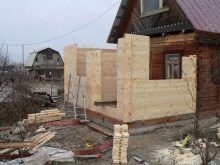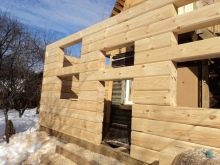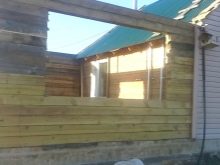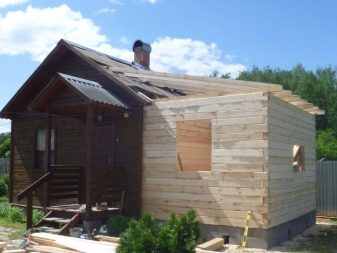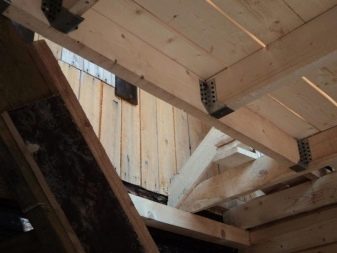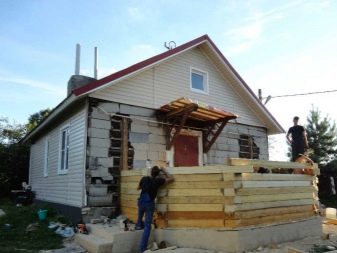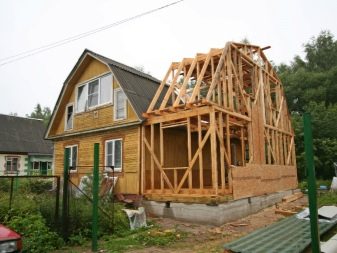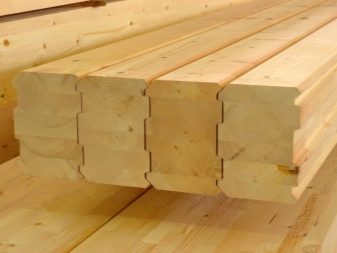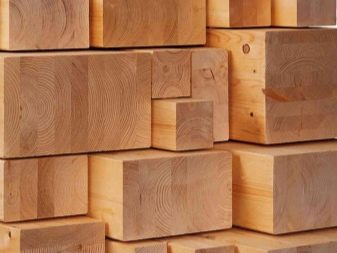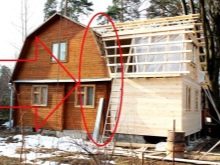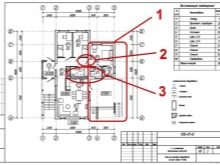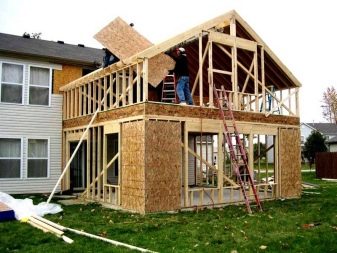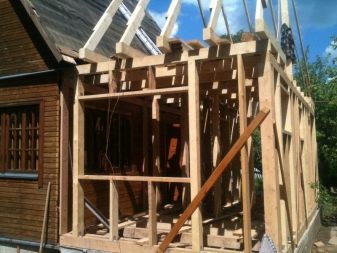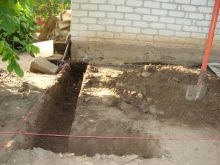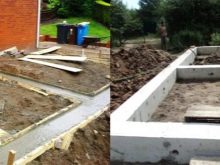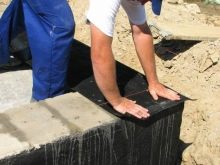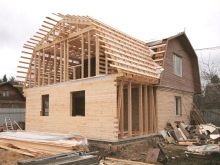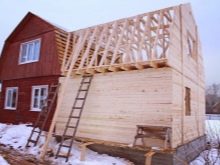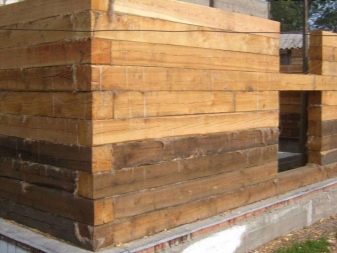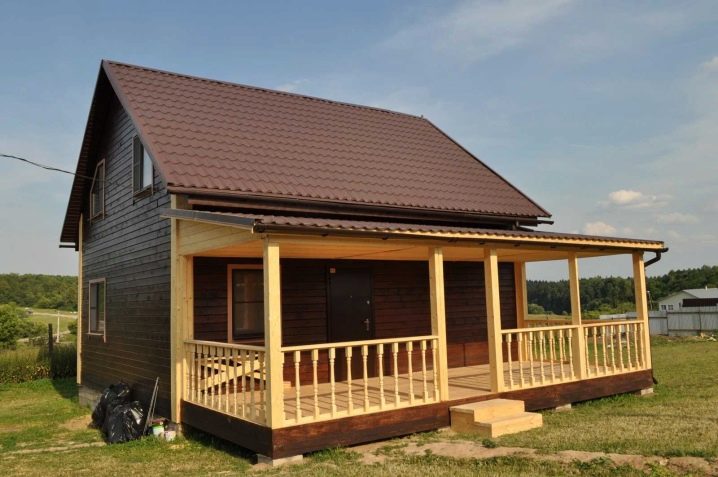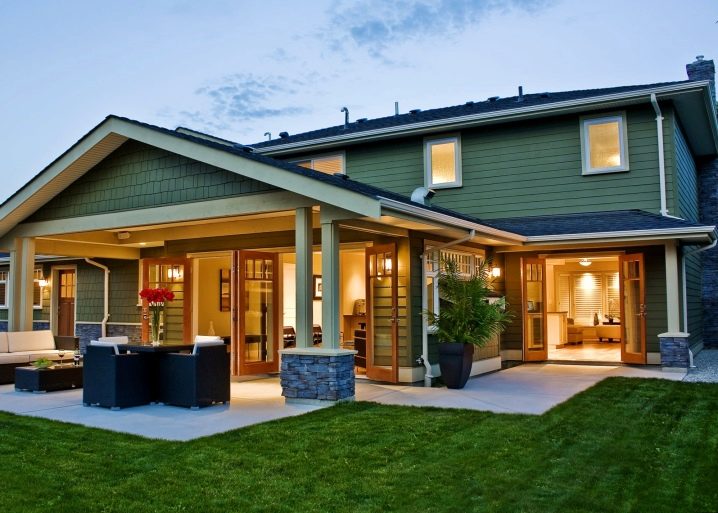Rules for the construction of an extension to the house of the bar
Wooden private houses are becoming increasingly popular and in demand. They are suitable for a comfortable and cozy, and most importantly, eco-friendly country living. The most popular are log houses. But sometimes the area of the house becomes insufficient.
An extension to a private home is an inexpensive, aesthetic and affordable solution. Consider the rules for the construction of such structures, features and necessary advice.
Special features
Living in a private house has a number of advantages, one of which is the ability to expand its living space at any time by building an extension. You may encounter the need to build such an extension if you were missing a living space when you purchased or built a house.
In general, an extension from a bar is erected taking into account certain rules, technologies and skills that must be owned in order to be able to build it. Among the design features of such a construction, two options can be distinguished: a frame or frame walls.
The advantage of the extension is that for such a structure you will have to build only three walls, since the fourth wall will be your house. Any material can be used, be it brick, wood or anything else.
You should be aware of such features of any new home, as shrinkage. It is the cause of the connection of the old and new buildings. After shrinkage, a better fixing is usually performed. Shrinkage is observed in new homes and buildings for a year or even more. Because of this, the interior trim commit later.
The connection of the two parts of the house can occur through the metal bracket.
Woodwork is done in winter to reduce shrinkage time. To warm such a room is necessary from the inside. Wooden structures are treated with fire-resistant means and other special preparations that protect against moisture, harmful insects and other unpleasant circumstances.
But you should also determine how you will join the house and your extension between them.Often they are simply separated from each other by a moving and breathing expansion joint, which is necessary for shrinkage and guarantees the presence of entire walls of your extension.
In places where the connection of wood and brick occurs, you will need to make a waterproofing. And in order to combat the draft, you will need mobile seals between the wooden and brick surface of the walls.
Materials
First you need to decide what building material will be used, as it determines the price and durability of your building.
One option is to use a wooden beam. And also such buildings can not do without the use of bricks, aerated concrete, foam blocks, as well as chipboard or OSB. An extension is built according to the type of standard construction of a house from a profiled bar or other material.
Among the advantages of timber can be identified several factors.
This, of course, low thermal conductivity and a smooth surface of the walls. Such an extension is easily repaired and finished on its own. Deformation and cracks are not formed.
The small weight of an extension allows to use more simple performed by and inexpensive base.Another feature of such an extension in the aesthetic appearance. In addition, the material is environmentally safe.
The timber used as a material can be either profiled or glued.
- Profiled timber. Convenient material. During installation, each subsequent element is installed in the return profile of the previous beam. The resulting construction is very durable. The tight fit of parts is the main advantage of this type.
- Glued laminated timber. More modern material. It passes forced drying and processing on high-precision equipment. Then the product is machined. The high strength of the geometry makes this material expensive and of high quality.
Projects
Your lumber extension can be located on either side of the house, as long as it looks harmoniously against the general background and does not block the windows of other buildings.
When building an extension, you should start with a plan for the future structure. It is necessary to take into account a number of important factors.
- The first is the purpose of the future premises (veranda or attic, garage, lounge, workshop or storage room, toilet or bath).A lot depends on it, namely: what building materials will be used, and how many window openings will be in your extension. As well as an additional structure can have both a separate entrance and connect with the main house. Your future prirub to the house can be completely different sizes, for example, 4x9 or 6x9 meters. But the standard size of timber is 100x150 millimeters.
- The second is the availability of utilities at the site of future construction, that is, sewage, water supply, gas and other. They should be provided with free access during and after construction.
- Third - the choice of material for construction. A very important point. After all, the material from which you are going to build an extension greatly affects its cost and durability.
You should decide on the format of the extension. You can use both frame walls and solid frameless ones of stone or wood. You can not forget about the floors, the area, the availability of free land, as well as other features of your home.
Frame construction allows you to get a reliable building, which is not terrible soil subsidence.Such a building quietly keeps the second floor on itself, and also has excellent heat resistance.
How to attach your own hands?
The construction of every building begins with the foundation. Based on this, we first consider the process and technology of the construction of the foundation. It must be emphasized that at the base and extension it should be the same in its constructive affiliation.
It is necessary to know about the foundation of your home the following criteria: the size and depth of its occurrence, as well as the material used.
It should be said that the foundation can be laid throughout the year. The temperature factor does not affect this process at all. The base can be of several types: monolithic, concrete or reinforced concrete. After its construction, it is necessary to give time so that it settles within a month, no less.
Installation takes place in several stages. First, we determine the size and depth of the foundation. Then we dig a ditch and fill it with a sand-crushed cushion for 10-20 cm. We mount the formwork and assemble a frame from reinforcement with a bundle to the foundation of the house. At the end we pour concrete.
It is necessary to properly insulate the base of the extension. To this end, the butt of the foundation is smeared with bitumen mastic or liquid rubber. Then a layer of stekloizol or roofing felt is attached. After completing the work, you should wait about three weeks before starting the next stages of construction.
Then we build walls. We warm them and join them together. The advantage of the extension is that the structure requires only three, and sometimes even two walls. Profiled timber also needs to be treated with means that increase the hygroscopicity.
At the very end we begin to build a roof. The main points here will be the following: we construct rafters, we put a batten or solid flooring on them and we veneer the gables. Then we stitch your eaves and we establish wind elements.
Then we mount the roof covering itself. In this case, the angle of inclination must be made so that the snow could freely slide. It remains the device floor, filing ceilings and other finishing work.
Tips
Here are some very useful and necessary tips. When choosing the type of foundation better and easier to apply the installation of the pile foundation.To do this, it is necessary to drill holes and drive supports into them. After all, if you are building an extension under the veranda, then such a foundation will be the best choice. It will be easier and more economical than a full-fledged foundation.
It should be said that the extension for permanent residence is built of sawn timber with a cross section of at least 200x200 mm, which is heavy and will shrink.
It is impossible not to note the fact that to create project documentation it would be better to seek the help of specialists in this field. This way your documentation will be executed correctly and accurately.
In order to spend on your extension less resources, use some tips. Buy building materials in the winter. Self-pouring the foundation will also avoid unnecessary costs.
To the wooden house is usually attached frame-timber extension. However, such an extension can also be made to the house of brick or cinder block. Then it is warmed and trim under the main house. It should be noted that the attachment will be secured with metal brackets or plates, nails, screws, and brackets.
After filling the foundation will need to wait a few weeks. And then continue the construction work.
As for the expansion joint between the walls, it must be movable. That is, wood, brick and other similar hard materials cannot be used as a gasket between the walls.
Timber should be purchased with a moisture content of not more than 12 percent and impregnated with a variety of antiseptic agents.
The final stage of construction will be documentation. Recently, it does not cause any difficulties, if you comply with all the necessary construction and operational standards. Registration of all documents on the extension may take about one year.
Beautiful examples
Let's look at the beautiful and unusual examples of extensions to your home.
In this example, we see a summer open-air veranda as an extension. The roof of the house and the extension is made of the same material. The extension and the house are made of wood. Everything has a warm light chocolate color.
Here we see an already closed, warm porch with a porch as an extension to the brick house. The extension is made of wood. With a lot of windows. Color is red-brown.Everything looks very nice and expensive.
Beautiful and large extension as a hallway for the house. Everything is done in one common style.
Some of the nuances in the construction of attachment of timber waiting for you in the video below.




